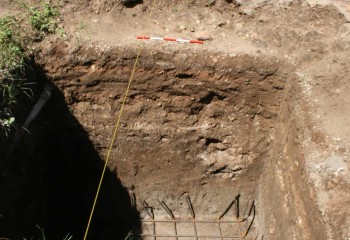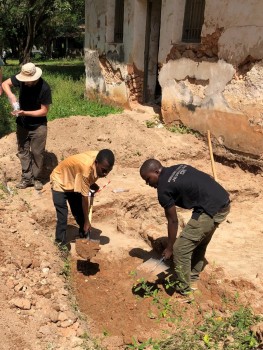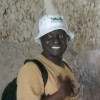AUTHORS: Nick Pearson & Graham Bruce (of Onsite Archaeology, York, UK)

Any digging of holes in Pangani has the possibility of archaeology being revealed. This could include new buildings being constructed, the burial of pipes and cables or large public projects like the river wall replacement. Overseeing these activities as part of archaeological recording is called a watching brief. The intention is to examine the holes (dug for whatever reason) and record what is there, but not to disrupt the work that is taking place.
A watching brief requires cooperation. These opportunities can only be taken by the people of Pangani as they are in the town at the time. Very occasionally a watching brief may be carried out by visiting archaeologists (for example from Dar es Salaam or overseas) but this would be the exception. The obvious local organisation for coordinating this is Uzikwasa. The excavation carried out in July 2018 has provided the chance to give training to Severine Kizito and Antiquities representative Ally Mbarouk as to what to look for—which might be of possible archaeological interest—during a watching brief.


In planning this training together we decided that recording would be at a fairly simple level and would concentrate on the location of former buildings (earlier wall foundations where buildings were not recently known) and the total depth of archaeological deposits. This can be done with a few notes, or even verbally, if reported to a single organiser. The records could be held by the Heritage Centre and local people would be encouraged to report any observations. Photographs are always very useful to show any archaeological remains and make a record of the work.
There were several reasons for suggesting this approach:
At present all of the archaeological investigation in Pangani is carried out by visitors who come for a short period of time. This will only occasionally coincide with the times that digging is happening. It will only happen by chance. Local reporting can respond to development immediately.

The opportunity to take part in this type of recording will give the people of Pangani a closer link to their own heritage. They are the most important part in the continuing history of Pangani.
Over a period of time this type of recording will allow a greater understanding of the size of historic Pangani. It may challenge previous ideas regarding the size of the town in the past; which areas were settled and where was not? Has the centre of town always been in the same place or has it shifted? Building up this picture will enable a better understanding of the archaeological resource and enable future research to be better focussed.




